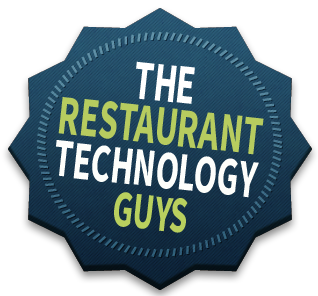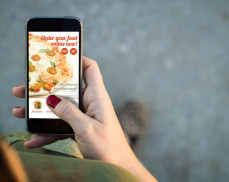
Delivery technology is growing at such a fast rate, but what about online ordering? If more customers want delivery, can we not skip a manual step and have them order digitally?
The future of the restaurant business lies squarely with online ordering. With new meal delivery services popping up each year, restaurants are going to have to jump onboard. Offering online ordering and delivery puts you in front a whole new customer-base than just walk-ins, which will increase your revenue and breathe new life into your business.
Grow orders & accessibility
A study commissioned by GrubHub, an online and mobile food ordering company, found restaurants using the online-ordering service were able to grow their takeout revenue by an average of 30%. This is no coincidence. There are a couple psychological effects going on here, including judgment, but one are we want to focus on is: when given the entire menu, customers will order more.
In fact, one in five restaurants doubled their takeout revenue. Between changing consumer behavior and the relative ease of implementing online ordering through platforms like GrubHub, being digitally accessible is now more important than ever for restaurant success.
Been trying to reach out to millennial customers?
To millennials, even if a restaurant is right around the corner, it’s virtually invisible if it’s not easy to access online. And being truly digitally accessible includes the ability to take orders online. According to the National Restaurant Association, 60% of adults say they’d likely take advantage of delivery to their homes or offices if limited-service restaurants offered it.
Become more efficient
Being more convenient for consumers is important, but it’s just one of the many benefits to online-ordering platforms. The research found that GrubHub’s order technology was able to cut order-processing time by more than half, which provides a huge benefit to restaurants’ internal operations.
Research shows 75% of phone orders take more than a minute, and 30% take longer than three minutes. When added up, every 100 takeout orders received each week on online platforms, saved restaurants 2.5 hours of workers’ time. With customers entering their own information, online ordering can also improve accuracy.
Showing the biggest benefit to moving to online ordering were smaller restaurants; they typically see a 50% increase in takeout revenue after joining GrubHub or other services like it.
Build a database
If you’re like many restaurant owners, you’re building an email database of your customers. This lets you market and communicate with them in the future by sending specials, loyalty information, coupons, links to blog posts, interesting tips and videos.
You rarely get an email address from your in-house diners. And, you almost never get an email address from a phone order. But, you always get an email address from your online orders.
Because of online ordering, you know exactly when and what your customers order. Using this information lets you know which menu items are the most popular and which are lacking. You can then adjust, add or remove menu items based solely on what your customers are eating.
This also allows you to send personalized promotions to your online ordering customers because you know detailed information about their spending habits.
For example, let’s say Bob Smith ordered from you once in January, but from your analytics you know he hasn’t ordered in six months. You might send him a targeted promotion to get him to come back. You might also send him a survey to find out why he hasn’t returned. This can provide you valuable data on how to engage customers, just like Bob, to come back.
If you have been thinking about adding the capability to order online, do it. This will give you added flexibility, grow revenue, reduce costs and reach more customers than ever.
Serious about updating your POS? Check out the Northstar POS system to improve the power and effectiveness of your restaurant!

Technology is updating and changing every single day. And currently, the food, drink and hospitality industries are in the process of being transformed by emerging technologies. What new technology will become standards and which will fall by the wayside? Today, the Guys go over what technologies to keep an eye on in 2019!
#1. Better Delivery Ordering & Tracking
Delivery is growing and is becoming more important. We have been watching delivery grow over these past couple of years and you may read a few articles that we have on the subject. For a refresher, check out the three articles below:
The subject of delivery has been growing and we do not expect it to stop. 2019 will see that delivery becomes faster and more personal for the customer. According to coverage of a recent report published by a firm in Edinburgh, Scotland, people can expect to see more GPS tracking technologies that let them follow their food with real-time movement information displayed on a smartphone screen. It will most likely mimic what Lyft and Uber show on their apps to show when a driver is arriving. Currently, customers get estimated delivery times and instructions to contact the restaurant if their food doesn’t arrive on-time. We will begin to see additional personalization and contact between the delivery drivers and customers.
One interesting aspect of ordering we are curious to see more of in 2019, is voice ordering. Customers that use Grubhub can ask Alexa to place one of their last three orders again. With the prevalence of Alexa, Siri and others like it, we think the ability to order items via voice commands spoken to smart speakers could become more of a trend many foresee.
#2. Changes to beverages?
When you go to any restaurant, customers are offered a drink: water, soda or any other beverage. A company in North Carolina called Clear Water Manufacturing engineered an alternative — a machine that filters water, dispenses it into recyclable glass or aluminum containers and puts the caps on them.
The innovation, known as the Boomerang Water Machine, could allow restaurants to highlight a commitment to environmental sustainability, all while saving on costs. What this does is encourages people to come back to the location and return their water bottles to be sterilized and used again, thereby potentially eliminating single-use plastics.
#3.Virtual reality
The future of restaurant menu interactions will be coming in 2019. However, some folks are already experimenting with it. Augmented Reality (AR) is one of the biggest tech trends to look out for in 2019. This new form of technology will allow customers to have a visual experience like no other. AR allows customers to use their phones or restaurant iPads to view 3-D renderings of menu items. This gives customers not only an image of the food, but to view it as if it was right in front of them.
We made reference to this in one of our previous articles, ‘3 Restaurant Trends to Look out for in 2019.’ Check it out to learn more about the capabilities of AR and how it can benefit restaurants.
#4. Fully-automated restaurants?
We know there is buzz around this subject, but we just don’t see this catching on just yet. In the future, yes, there absolutely could be more automated restaurants, but not for 2019. There are pioneers out there like Eatsa, Spyce, Crave and more, but we still need that human interaction. The market is showing us this because most of these businesses are hurting and not expanding all over the country.
Instead, we see more of a surge in kiosks, pre-ordering via apps and smart-screens, as opposed to a fully-automated restaurant experience.
What restaurant technologies do you think we make a splash in 2019? Leave comments on our Facebook, Twitter and LinkedIn pages!
Curious about how Custom Business Solutions can help your company? Check out their Northstar POS system and its capabilities to power and improve your restaurant!
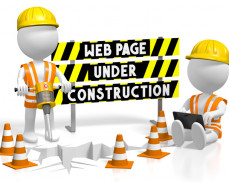
It’s 2019 and you’ve made the goal to have a website built for your restaurant. However, you see services like Wix, Squarespace and GoDaddy that say you can build full-blown, awesome site fast.
But is it worth it?
After all, wouldn’t it be better to save some money on your website and build it yourself instead of spending thousands of dollars to have someone build you a website?
While it may seem tempting to pay less than $10/month for such a service, we would counter by asking you these questions:
The answer to most of those questions is most likely, “no.”
Below, we are looking at the hidden costs of DIY website builders and how you can avoid these hidden pitfalls.
#1. Time
Even for professional programmers and web designers, building a properly functioning website takes time. And as an owner/operator of a restaurant, it is time that you do not have. Yes, these services have templates and some of them are good, however, writing effective copy, choosing the right images and injecting the functionality you want, are all things people do not think about. Do you want users to make reservations? How about order online? What about proper security for paying online? Most of these functions are available, but only at an additional cost.
Also, the systems are somewhat simple, but there is a learning curve to navigating and adding new elements when building a site. We say, as the RTGs, it is ‘simple’ because we live and breathe digital, but to someone who has zero or minimal experience, this could be extremely frustrating.
#2. Search Engine Optimization (SEO)
You ever heard of Search Engine Optimization (SEO)? SEO is a marketing discipline focused on growing visibility in organic (non-paid) search engine results. SEO encompasses both the technical and creative elements required to improve rankings, drive traffic, and increase awareness in search engines.
There is a whole science behind making websites appear on the first page of search engine results. And this may sound fancy or made-up, but this is a real and very necessary task that needs to be done. There are great resources on the internet about SEO and it’s importance. In fact, we have written two articles about it as well. Check them out to learn more about SEO:
#3. User testing
You have finished creating your website, everything looks good and you have feel so proud. Next day is when you scheduled to launch and everything seems fine. You wait a week or two and notice that no orders have been coming through and wonder why. Come to find out that the order button on the website leads to a dead-link (meaning the page does not exist or load). Or, the menu items that you worked meticulously on do not render on the page.
Above are all real-world examples of what happens when you do not take the time to test and have others go through the user journey. These mistakes can be as big as the ones above or as small as images not loading, typos or top-navigation links not showing. But in our digital day and age, any mistake makes a site look cheap and we often hit the Home button and search for a better alternative. We have done it before and are very sure you all have done the same. Don’t be the site that people back away from and never return.
Look, if you have the experience and know-how to create a fully-functioning website, by all means, go for it. But, if you do not have that experience, do not fall for these services and thing you can ‘knock one out’ quickly. Especially if you want to put your best foot forward to customers and want the functionality users expect.
Our advice is to seek out services or people that have experience in this field and can give you exactly what you and your customers need.
Be sure to check out Custom Business Solutions and their Northstar POS system to improve the power and effectiveness of your restaurant!

2018 has been an exciting year for restaurant technology: the prevalence of delivery options, increased investment on kiosks, the rise and fall of cryptocurrency and the impact of social media. But what does the future hold as we make our way into 2019?
Today, we are putting together a quick list of what we think will be big trends in 2019.
#1. Virtual/Augmented Reality
The future of restaurant menu interactions will be coming in 2019. However, some folks are already experimenting with it. Augmented Reality (AR) is one of the biggest tech trends to look out for in 2019. This new form of technology will allow customers to have a visual experience like no other. AR allows customers to use their phones or restaurant iPads to view 3-D renderings of menu items. This gives customers not only an image of the food, but to view it as if it was right in front of them.
While this concept sounds very complex and expensive, it is actually quite simple.
Tech start up Kabaq is at the forefront of the AR trend. Its application allows restaurants to add the 3-D experience to their menu within just a few weeks.
With the use of high quality images and other image guidelines, Kabaq is able to process them and create a 3-D food model. The customer is then able to access the 3-D renderings through Snapchat. Customers are first prompted to scan a Snapcode and this gives them access to the 3-D menu items.
Why do this?
Remember the adage: people eat with their eyes? This system gets at exactly that sentiment.
A study conducted by Kabaq says that restaurants saw an increase of 25% in dessert sales alone with the use of AR.
The AR trend is still in the early-adapter phase. As a result, restaurants that choose to integrate this technology now will have an appeal that other restaurants do not. This can generate a plethora of marketing opportunities that will attract new customers vying for a memorable experience.
#2. Mobile Payments
In 2017, the use of mobile payments grew 75%, especially within quick-service establishments. For a consumer, the ability to order and pay from a mobile device speeds up the process dramatically.
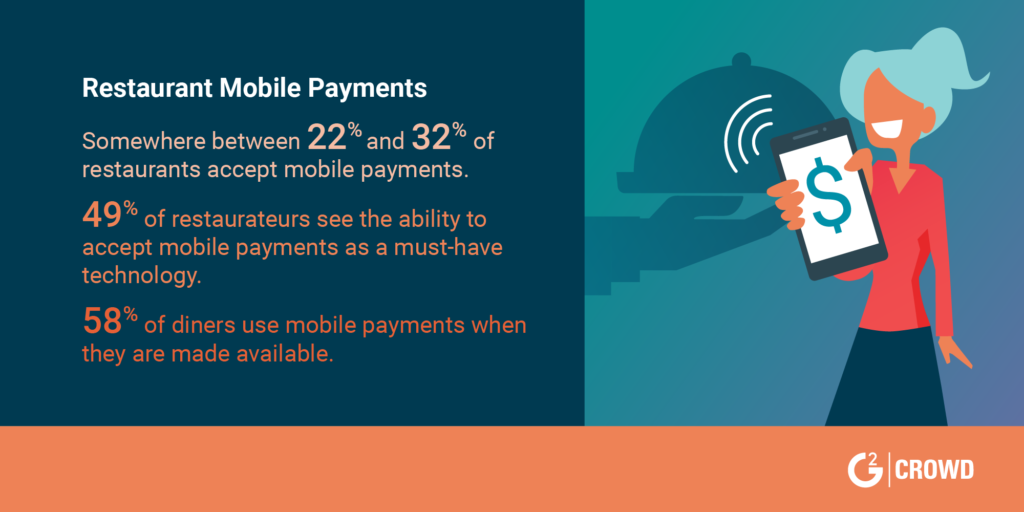
For restaurants, mobile payments cut down the number of customer touch-points, thereby making it easier to serve more customers. Plus, it can provide a wealth of data about their customer base and spending habits. By doing so, restaurants can have a built-in loyalty program that incentivize customers to both return to the establishment and continue using mobile pay.
Mobile payments are great, but they are not without their own risks. All owner/operators need to be aware that data breaches are a real concern. 2017 and 2018 were full of large and prominent examples, including Cheddars, Adidas, Panera Bread, Verizon and most notably, Equifax.
#3. Self-serve Kiosks
Did you know: 95% of restaurateurs agree that restaurant tech improves their business efficiency and 65% of customers use an ordering kiosk when it is presented to them? That means switching to a mobile POS software or the implementation of an ordering kiosk would be an advantageous move.
In addition, 73% of diners agree that restaurant technology improves their guest experience. More specifically, 61% agree that handheld tablets improve the dining experience.
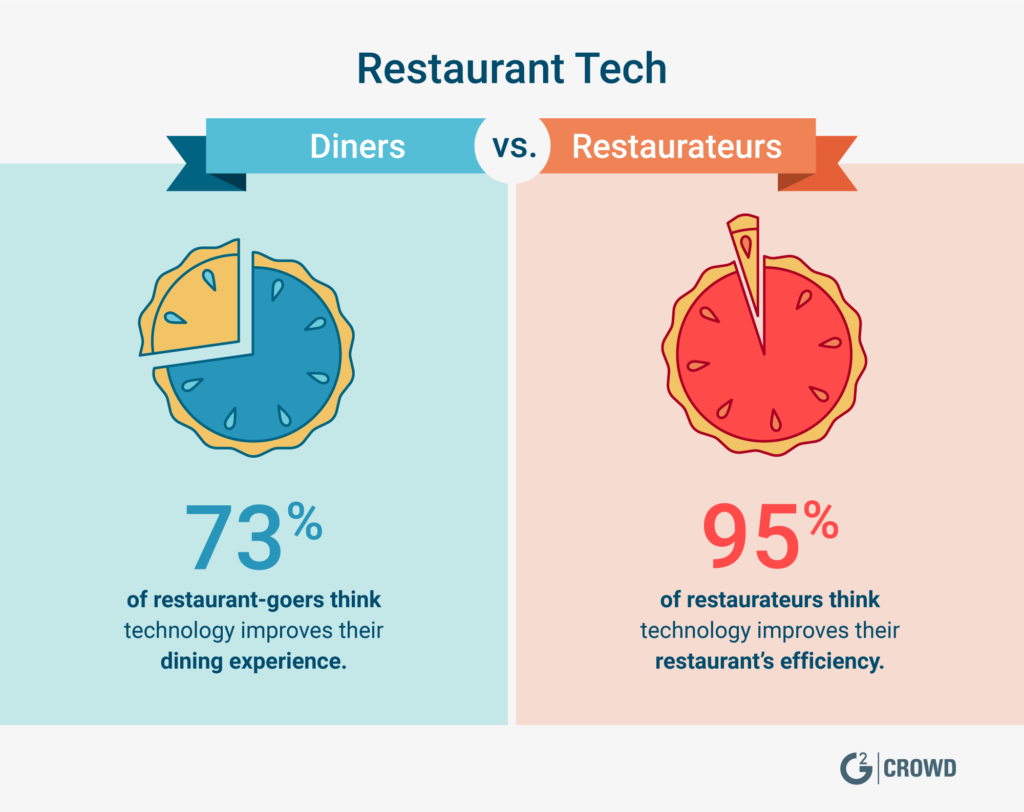
Do you have tablets in your restaurant? Test with one or two and see how your customers react. Be sure to track their tipping on IPad versus non-iPad users.
2019 will no doubt bring new and interesting things for the restaurant industry. We cannot wait! What trends do you think will be dominate 2019? Let us know on our Facebook, Twitter and LinkedIn pages!
Serious about updating your POS? Check out the Northstar POS system to improve the power and effectiveness of your restaurant!

2019 is right around the corner and with the closing of every year, now is the time to start everyone’s favorite activates: strategy planning & goal setting.
It is important to create goals and actually stick with them. This not only helps you craft a marketing & strategy plan, but it helps you manage your goals and assess them. We also suggest picking a day once a quarter to review the goals you set see where you are succeeding or need improvement.
Goals vs. Objectives
First, let’s set the record straight when it comes to goals and objectives for your restaurant.
Objectives are not specific. They are your broad aims. For example, stating that you would like to increase sales, would be an objective.
Goals on the other hand, are objectives that you attach numbers and deadlines to. For example, a goal is: wanting to increase sales by 15% in six months.
Ultimately as a restaurant owner, your goals need to follow the SMART guidelines. This means they are:
S – Specific
M – Measurable
A – Attainable
R – Relevant
T – Timely
A SMART goal helps you realize your objectives sooner and achieve them in a timely manner. Your goal should be specific. You’ll find you have more success with a specific goal than a broad one. To set a specific goal, you ask the question why.
For example, why do you want to improve customer loyalty? Once you know the why, which is the big picture, you can begin outlining your goal and then back it up with a strategy.
When talking about goals, only you and your business leaders know what is best for the restaurant. However, if you are having a difficult time getting started, below are some example goals to spark your mind.
#1: Increase Monthly Net Sales By X Amount
This goal is always on everyone’s mind and usually the top of the list. We all want to increase sales, and you should. Just remember, sales are just one piece of the successful puzzle. Reducing wasted costs is just as important as sales. Before you define your goal and plan, you need to know what your sales are currently, where you want to take them and the time frame to make it happen.
#2: Increase Daily Net Sales By X Amount
Here is an example of a short term goal. It might be tied to a holiday or weekend promotion.
#3: Improve Customer Satisfaction
With this as a goal, you might consider launching a loyalty program to reward consistent customers and gauge customer satisfaction. Your strategy to reach this goal could include tactics to train your staff how to provide excellent service and incentivize employees who get it right.
#4: Improve Your Social Media Engagement
For example, your goal may be to increase your Facebook followers by 25% in six months. Insert any social media platform and go from there. However, make sure that you connect your social media to some kind of value to your company. Sure, it may be great to have 5k followers, but how does that translate into revenue? How many sales do I make from my Instagram, YouTube, Facebook, etc. followers? Think about adding cookies to each source so you can track and definitely say which channels are the most profitable.
#5: Grow In-restaurant Traffic
Some restaurants want to bring more diners inside. Whether it is breakfast, lunch or dinner, you might set a goal of bringing in 50 more customers this month. Once you’ve got the goal, you can focus on using email, website, social platforms and other strategies to bring in new customers. You can always promote this with specials, gift cards or discounts for referrals.
We hope that these example goals inspire you to set your own. What are you looking to focus on in 2019? Be sure to let us know in the comments below or on our Facebook and Twitter pages!
Serious about updating your POS? Check out the Northstar POS system to improve the power and effectiveness of your restaurant!

We have an exciting treat for everyone! We partnered with the pros over at Restaurant365 to share the 3 areas where you can save money with the right software.
It’s no secret restaurant technology has come a long way, especially in the last five-to-ten years. But what exact issues have been solved since the days before iPads and tablets? There are several restaurant management software options out there, but it’s essential to choose an all-in-one solution – it will make your life so much easier!
Restaurant365 is the world’s only all-in-one, cloud-based accounting, back office and reporting solution for restaurants, and is constantly being updated with new features to keep up with the ever-changing restaurant industry. Restaurant365 has operations-specific solutions that have made it infinitely easier for managers to handle inventory, ordering, scheduling and reporting, all in one place.
So, where can Restaurant365 help make your business more efficient and save you money?
Area 1: Inventory Control
Customers using Restaurant365 technology have an inventory turn 2.5X better than the average restaurant owner. Spreadsheets living within the software track stock counts, product transfers and waste log. With the Restaurant365 mobile app, managers are able to count inventory on the go, so forget the pencil and paper!
A recent upgrade also allows the software to automatically suggest quantities of ingredients and supplies a restaurant needs based on usage per $1,000. Rather than keeping track of shipments coming through the restaurant’s door, the software tracks what ingredients, and exactly how much, guests are ordering in line. This also allows purchase orders to be flagged if the restaurant is shorted product or when prices change.
With this tracking power, you can make sure the investment you make in inventory, is being fully utilized every time.
Area 2: Over/Under-Scheduling
Smart Scheduling software is another power tool in Restaurant365 and allows you to have full visibility of your entire staff. Managers can optimize and reduce labor costs with the scheduling tools designed to help maximize profits. A new feature added to Restaurant365 provides suggested hours to schedule per day based on sales per labor hour (SPLH) goals, allowing managers to create schedules smarter and faster with projected labor profitability, weather forecasting and even local events data incorporated.
Area 3: Food Waste
Throwing away ingredients is terrible. You either ordered too much or customers didn’t order enough of a dish to use the inventory in time. You are practically throwing money in the trash every time that happens. But with the help Restaurant365’s new prep feature that automatically suggests the quantity of food that should be prepped each morning based on forecast and usage per $1,000, you can avoid such disasters. Pre-loaded prep sheets can be printed and handed directly to the kitchen staff to have them make the right amount of product for the day. A prep history report is created for tracking historical prep production, which can then be used to spot trends in your restaurant’s prepping.
What a time to be alive in the restaurant industry! There’s no denying the power in software and programs being able to “talk” to each other via the cloud. Issues that seemed impossible to manage before can now be solved with the tip of your finger. To learn more about how Restaurant365 is changing the restaurant software game, visit www.Restaurant365.com.
